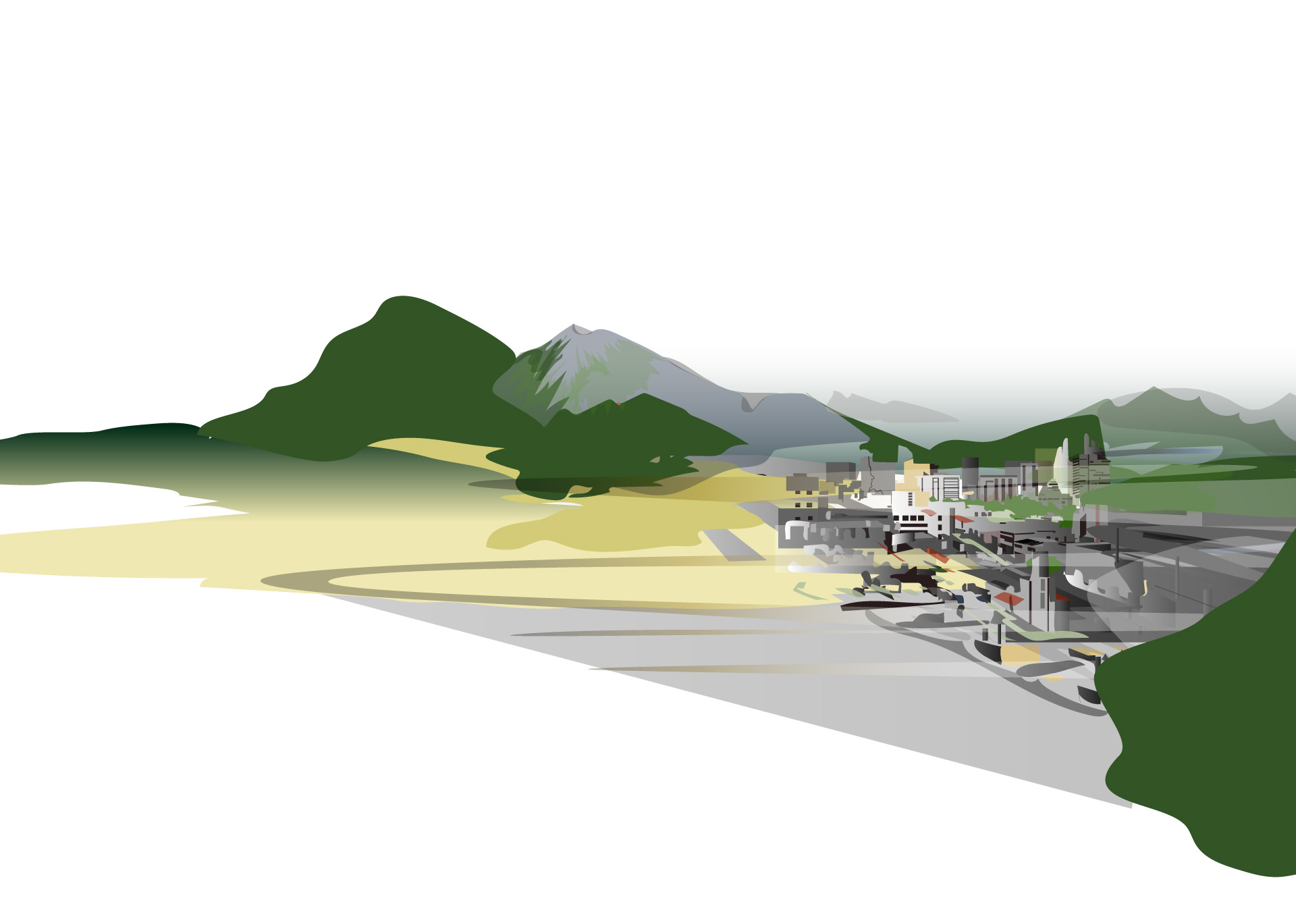Introduction
Life is different here. The wind does not pass by unnoticed in these valleys for it makes a terrifying echo as it strikes the stone walls and moves the clouds along the ground where one walks. The valleys are at an altitude over 2,500 meters above sea level. Pine and peach trees are bathed in dew morning and night. It is an immense place with mountains as high as ten buildings of the size of Mexico City’s Torre Reforma placed one atop the other, but there is no urban hustle and bustle, here silence reigns, a place ideal for growing poppies.
Sinaloa is the historical center of drug cultivation and production in Mexico, especially poppies and marihuana. The emblematic territory of trafficking organizations whose name is shared with criminal groups like the infamous Cártel de Sinaloa, and whose leaders include some of the personages recognized as the most important figures in drug-trafficking, not only in Mexico but worldwide: Joaquín El Chapo Guzmán Loera and Ismael El Mayo Zambada.
Drug cultivation is concentrated in a famous sub-region of Mexico called the “Golden Triangle” (Triángulo dorado) that extends over ten municipalities in 3 states: Durango, Chihuahua, and Sinaloa. The area’s breathtaking mountainous landscapes are enjoyed only by residents and soldiers. Its geographically remote borders are made even more so by a rough orography that impedes economic development. But this zone has two sources of added value: illicit drug production and mineral extraction. According to Mexican government data, gold, silver, and iron deposits exist in one-third of the territory of each state, but the subsoil has been concessioned to huge consortiums, both Mexican and foreign, mainly Canadian and Chinese.
When one hears, or reads, about poppy cultivation and its relation to Sinaloa, the region of Badiraguato immediately comes to mind. In the 1970s, this zone became famous for raising poppies and harvesting opium gum to be converted into heroin. It was regarded as the very heart of drug-trafficking in Mexico. But to understand the complexity of the drug-trafficking industry in Sinaloa, and its many historical evolutions, we must broaden the analysis to include other territories, as only this approach will allow us to comprehend that not everything revolves around the Sierra of Badiraguato, the operations of criminal organizations, the controls imposed by the armed forces, or the illicit business of trafficking itself.
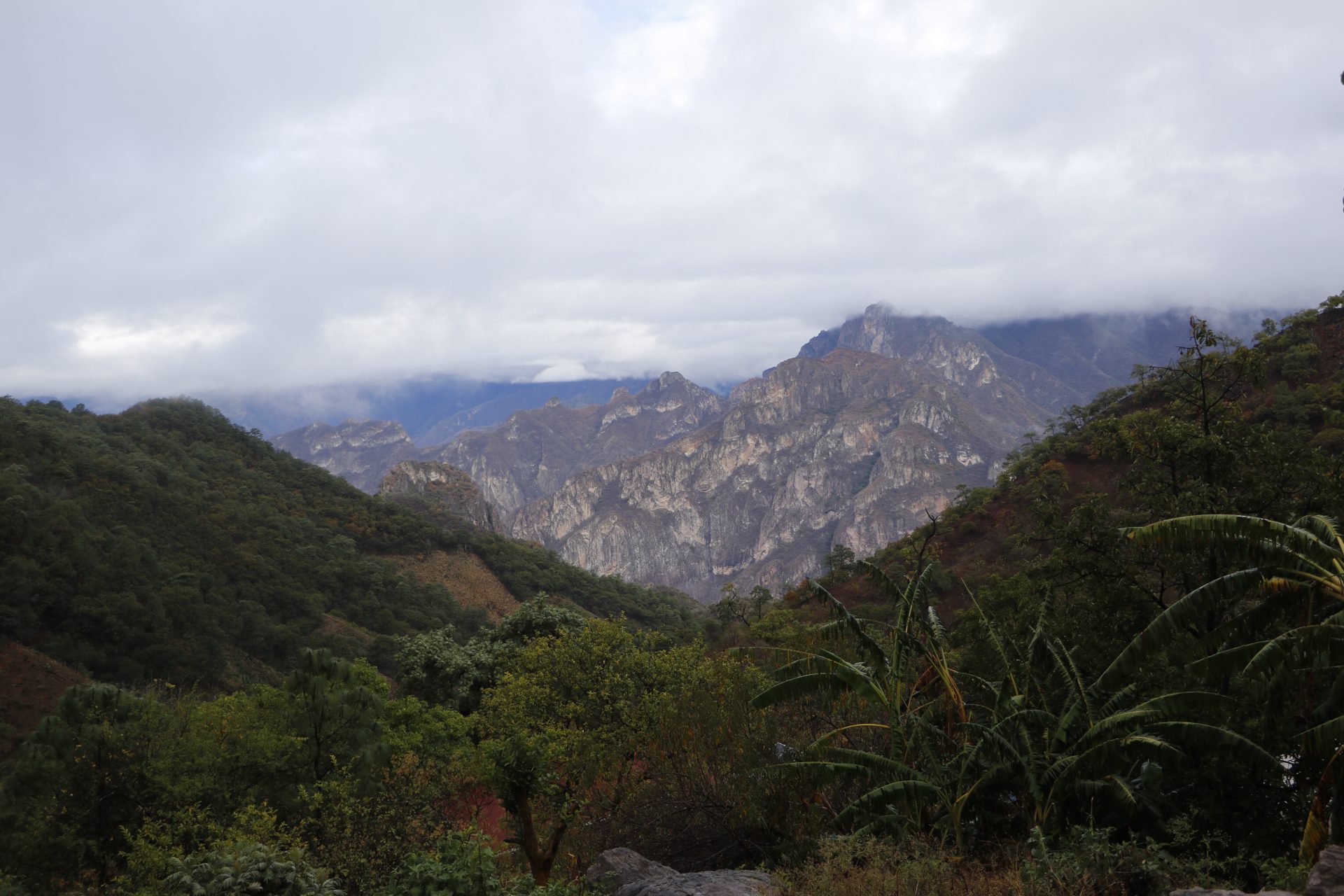
This text expands our gaze towards those ten municipalities inside the Golden Triangle. Hence, it traverses lands with fertile soils apt for raising various ornamental, fruit, and opiate plants, but characterized, as well, by high levels of marginalization and poverty. In most of the territories in the Sierra of Tamazula the only potable water comes from wells constructed by the townsfolk themselves. There are no sewers, only septic tanks or the broad countryside that spreads out in all directions. There is no electricity, much less Internet access. Cellphone signals are intermittent at best, capricious at worst, as moving a meter left or right from the spot where you make a call will likely cut the signal.
Out here, medical and educational services are unthinkable. On March 20, 2020, when the decree of confinement was issued due to the Covid-19 pandemic, the teacher in one village fled to the city. No one knows his whereabout or what will happen with classes. Girls and boys follow their fathers and mothers in their daily activities: in the kitchen, along trails, at home, in the fields, sometimes tending to poppies.
It is from pueblos like these that we analyze the relations between remote communities and urban centers in the region in order to see how peasant poppy growers (amapoleros) succeed in adapting to fluctuations in the international drug market. Activities in these sierras, we will see, cannot be understood if we fail to consider their connections with legal and illegal activities that flow through the cities and valleys of Sinaloa.
Rich fields for planting
The focus of our study is a place with only 50 adobe houses, the kind that Mexico’s National Council for the Evaluation of Social Development Policy (Consejo Nacional de Evaluación de la Política de Desarrollo Social, CONEVAL) associates with “extreme poverty”. The zone, which we will call Santa Marta, is inside the Golden Triangle and pertains to Tamazula, the largest municipality in the state of Durango. Due to its location at fewer than 80 kilometers from Culiacán, the capital of the neighboring state of Sinaloa, this area of the Sierra looks more towards Sinaloa than its own administrative centers. In fact, people prefer to buy telephones with numbers that correspond to Sinaloa, despite their higher cost, especially in the past.
This is a poppy-growing region. The population of these towns numbers in the thousands. Most are peasants who learned to plant and harvest poppies and other plants, like marihuana, back in the 1950s, always with the goal of selling their products at a fair price so they can continue to produce and ensure their subsistence. These same dynamics are seen in all the focal points where illicit crops are grown… in Badiraguato, Cosalá, Culiacán, Mocorito, and Sinaloa de Leyva in Sinaloa, Tamazula, Topia, and Canelas in Durango, in Guadalupe and Calvo in Morelos, and in Batopilas and Urique, Chihuahua.
This is a poppy-growing region. The population of these towns numbers in the thousands. Most are peasants who learned to plant and harvest poppies and other plants, like marihuana, back in the 1950s, always with the goal of selling their products at a fair price so they can continue to produce and ensure their subsistence.
Life in any poppy-growing village in these three states mean renouncing the comforts of urban life. People here know that food comes from trees or domesticated animals, that personal hygiene is important, but vanity is not, that illnesses are cured with medicinal plants like palo de brasil and árbol de zorrillo. This is how one cures the grippe, for the only alternatives are a five-hour trip by pick-up truck to the nearest city, or spending $3,000 pesos ($135 USD) for a ticket on a small plane called aero taxi, a private service now famous in this region of Mexico that first became popular in Sinaloa and later expanded thanks to burgeoning agribusinesses that utilize it to spray insecticides and fertilizers on plantations of vegetable and seed crops, as well as by private farmers who can afford the luxury of entering and exiting the Sierra in fewer than 20 minutes, depending on wind and rain.
But these small planes are also used to transport weapons and loads of illicit drugs. The aviation companies do not need to use airports and are not always subjected to exhaustive customs inspections because landing strips authorized by the Mexican government crisscross the state, alongside a similar number of clandestine ones, 205 of which were destroyed by the army between 2013 and 2018.
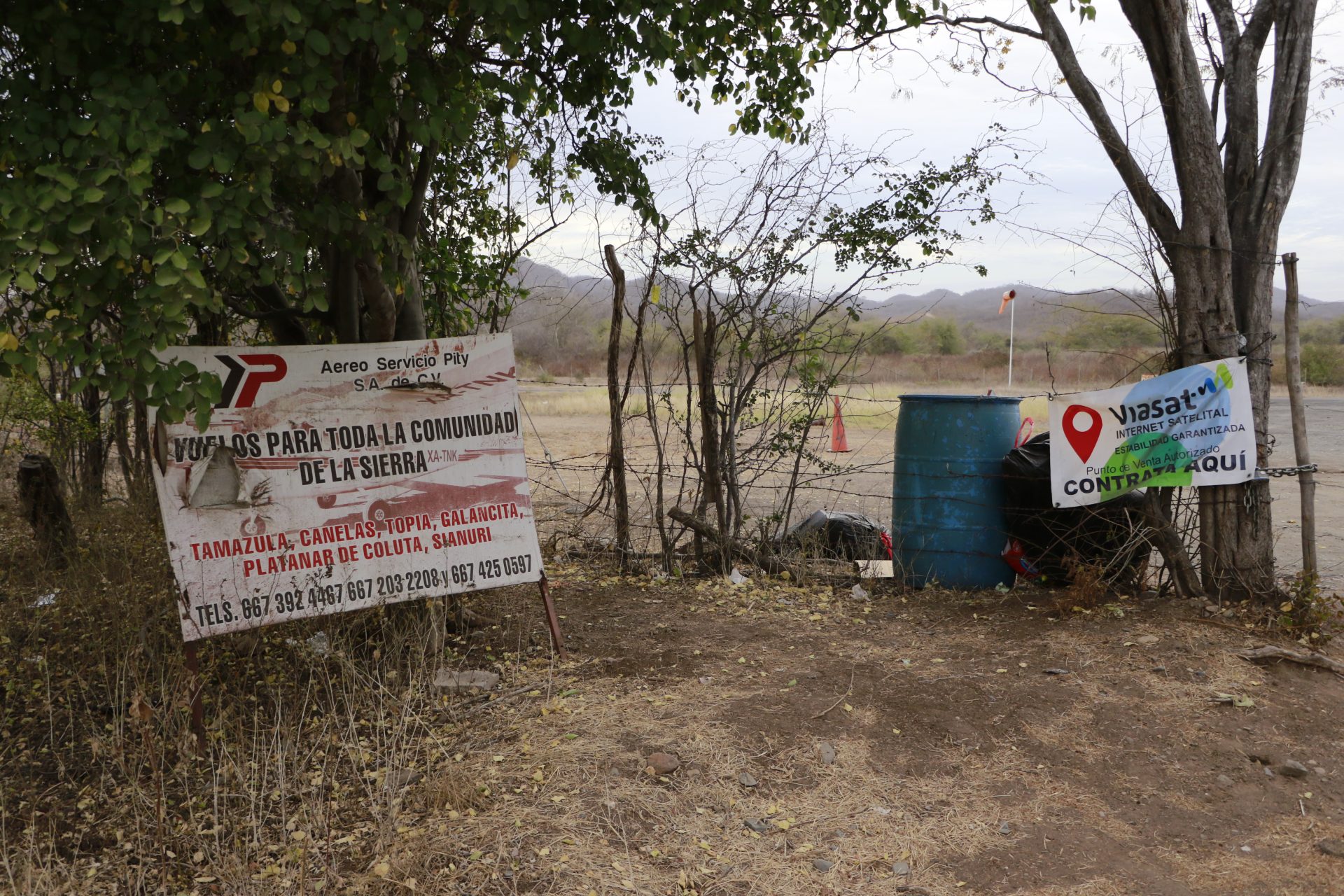
For peasants in the Sierra, these planes provide one of the few means –though private and costly– that allows them to connect with services that the government long ago ceased to install or maintain in their communities. Rubén, a peasant from Santa Marta, described the need to use aero taxis to reach a medical center:
“One time, my mother slipped, fell and hit her head. She began to feel real bad and we had to take her. We called the plane, but when we got [to the center] she looked worse. The doctor told us she had a cerebral hemorrhage [and] that the worst thing I could have done was put her on a plane; but how was I to know? My mom was never right after that, she was like dead. You’d talk to her but she didn’t hear you, she’d go blank and forget everything. One day she died… it was for the best”
Interview – Tamazula Municipality, Durango – January 2021
Aside from contingencies like this, people in the Sierra (serranos) do not look kindly upon contact with the cities. For serranos, living in urban centers in Sinaloa, Durango, or Chihuahua may mean going without food at least one day a week if you do not have a solid job, or cleaning windshields at intersections, or begging under the disdainful gaze of urban-dwellers. Some are forced to live under low bridges, or to build homes out of wood and cardboard in faraway places, like most poor people in Mexico.
Peasants do not experience this kind of poverty, though the government’s measuring institutions consider them comparable. But residing in these communities does not only mean living far from basic infrastructure, but also entails bearing the weight and pain of the stigma imposed by government, the media, and popular culture on all inhabitants of the Golden Triangle, be they drug producers, instigators of violence, narcos, or “owners of a criminal empire”, as has been narrated in thousands of stories and reports by police, international sources, and journalists.
Generations of poppy-growers and the division of labor
The poppy is a fragile, wild plant that produces beautiful flowers, some intensely red like the color of blood, others purple, some pink. Together they make lovely paintings on the hillsides. Poppy cultivation in communities in the Sierra Madre Occidental has evolved through various family-based models, transmitted largely by men. The people who plant and harvest poppies today learned their craft from their fathers, who learned from their fathers, and so on, over at least five generations. Gabriel, one such man from Santa Marta, recalled this while lighting a cigarette and gazing nostalgically towards the horizon:
“We inherited all this from the older folks while we were young… that’s how it’s always been. I could tell you it hasn’t been so long, [that] I don’t really know the date, but my grandpa did it and my Uncle José could cultivate long ago”
Interview – Tamazula Municipality, Durango – January 2021
These men work in plots called parcelas. Every peasant in Santa Marta is involved in this activity, performing different roles in the division of labor characteristic of this illicit crop. Some make sure there is enough water in the wells to irrigate the plantations. Others plant and watch the seeds to ensure they sprout in the narrow furrows with an appearance similar to that of lettuce. Men armed with hunting rifles kill the squirrels and birds that like to eat the ball (bola) of the poppy flower which contains the gum, difficult plagues to eliminate. Yet another role in this small industry involves stationing men to keep an eye on the people who enter and leave the town, ever vigilant among the trees, and communicating by radio (walkie-talkie) to guarantee the safety of their families and fields.
Opium gatherers (acopiadores) operate in much the same way as acopiadores of corn or beans. They are widely referred to as “coyotes” –like the men who organize and conduct the trafficking of illegal migrants between Mexico and the U.S.– because they are not above cheating and trying to take advantage of price fluctuations for drugs in international markets.
Every inhabitant clings to the same hope: harvesting at least eight kilos of opium gum per parcela to generate average incomes of $120,000 to $130,000 pesos (approximately $6,700 US dollars) per growing season, minus outlays for food, fertilizers, workers, and other essential inputs. In these zones, as in the Sierra of Guerrero, poppies are planted year-round for growers strive to collect three harvests depending, of course, on favorable climatic conditions. For these producers, the hotter the weather, the more vigorous the plants and the greater the concentration of gum. After the grower cuts (raya)the bola to extract the gum inside, the product is purchased by an intermediary who visits the town every four months, coinciding with harvest time.
These men are called gatherers (acopiadores) since they operate in much the same way as acopiadores of corn or beans. They are widely referred to as “coyotes” –like the men who organize and conduct the trafficking of illegal migrants between Mexico and the U.S.– because they are not above cheating and trying to take advantage of price fluctuations for drugs in international markets. These middlemen boast a certain authority in the Sierra. The raw gum they collect is sold to more powerful, richer, more organized groups whose work consists in converting it into heroin.
Market fluctuations and crisis
In late 2020, the price of opium gum increased after almost three years during which fentanyl production had dominated the market. In the same year, the U.S. Drug Enforcement Administration (DEA) documented that heroin traffickers from Mexico, who had traditionally supplied black or brown heroin to states in the western U.S., had modified their processing methods since 2012-2013 and begun to produce a white powder, a purer, more potent product that peasants in Sinaloa and Guerrero call china blanca (China White). The DEA’s reports mention that in 2018 there were 41,800 hectares of poppy cultivation in Mexico, 5% per cent less than in 2017, but 280% more than in 20131.
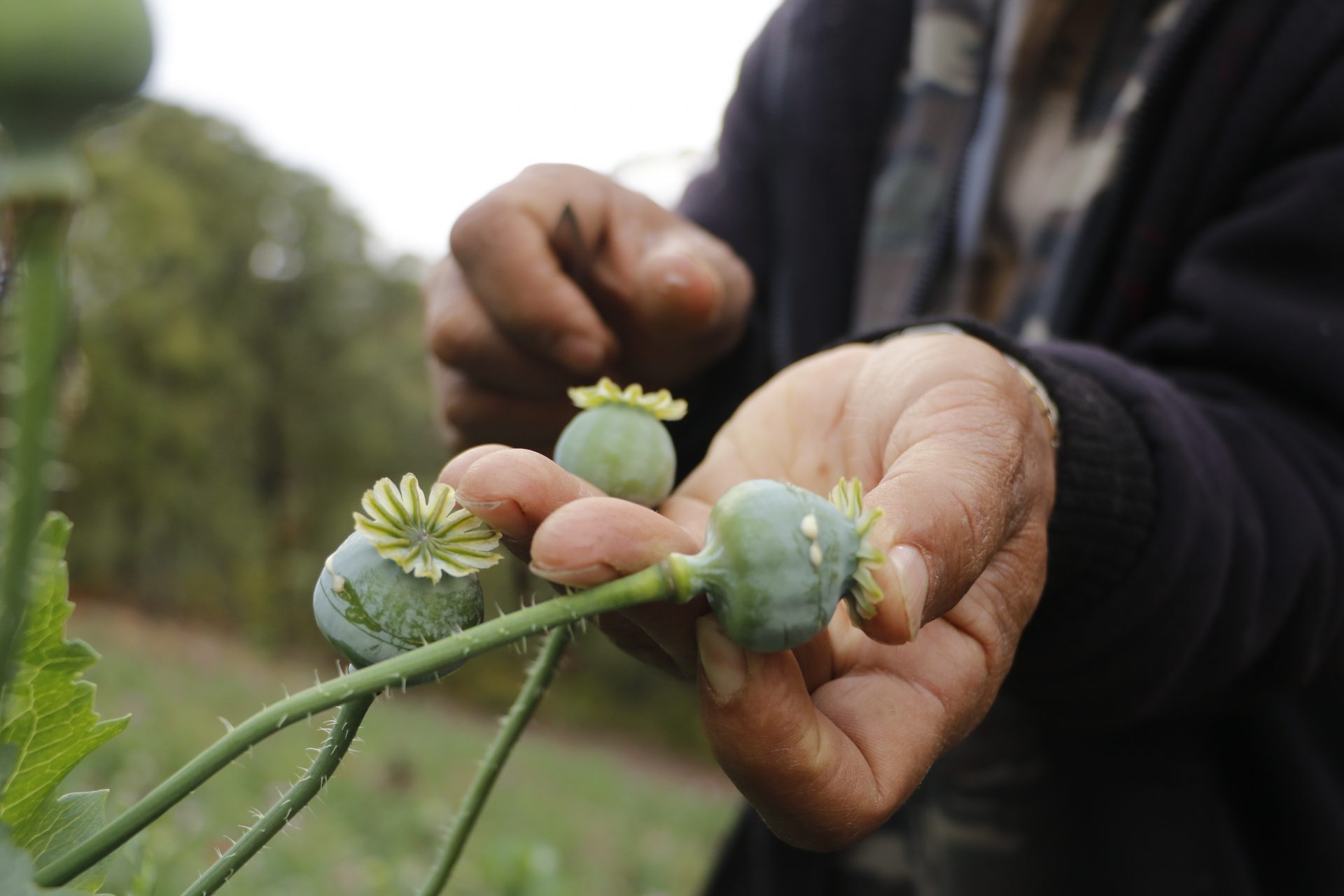
In 2017, however, all the peasants could talk about were the plunging prices of gum, though this occurrence seems not to appear in official documents. Trafficking organizations had found a new niche with fentanyl, an opioid 30-50 times more potent than heroin that offered a highly-profitable business, one that required less space and infrastructure. According to our findings, this product is usually cooked in laboratories set up in homes by at least two people who have a list of the required ingredients and the correct portions for creating the drug. The recipes are prepared by experts, hired by delinquent groups under the threat of violence, who teach the correct techniques for creating pills. This trade requires less attention and care than cultivating poppies, and its profitability for intermediaries and sellers is beyond compare2.
Another advantage is that producing fentanyl requires less space than heroin, since there is no need for poppy fields, and fewer workers since there are no plants to care for before, during, and after flowering, and no need to apply ammonia, urea, and other fertilizers to improve production, or to irrigate and maintain suitable soil moisture without drowning the plants. The consequence of failures in any of these operations in poppy fields meant yields that fell well below growers’ expectations.
Between Sierra and city: the crisis in the labor market for poppy-growers
The crisis in the price of poppies in the 2017-2019 period reduced the population of the sierras in the Golden Triangle as many inhabitants, mainly young people, went off to search for work in nearby cities like Culiacán, Guamúchil, and Guasave in Sinaloa, or Tamazula and Topia in Durango. One young man recounted the following:
“Although it was the same [amount of] money, over there [in the cities] you have to pay rent so there’s not much to live on or send [home]. You have to work in Uber or wherever you can. Sometimes delivering pizzas or for other restaurants”
Interview – Tamazula Municipality, Durango – January 2021
Another local peasant added:
“We couldn’t see how to get out [of the crisis], there was no income… some of us went to the city [but] others planted marihuana, the [price] also fell, but not as much”
Interview – Tamazula Municipality, Durango – January 2021
For young migrants from the Sierra, this presents a cruel paradox: approaching the city or poles of agribusiness ensures access to multiple job opportunities, but rarely permits improvements in their quality of life. Work as laborers in the fields of industrial agriculture in Sinaloa pays wages that range from 45-200 pesos a day ($2-10 USD) but entails long hours and exhausting –often inhumane– working conditions. Migrants leave one harsh, dangerous, illegal activity only to enter a second that, though legal, is just as cruel, though controlled by some of the most powerful businesses in the country, leading exporters of corn or vegetables to the U.S. The articulation and parallelisms between illicit and licit crops is clear to all the woman and men who exist on the lowest rungs of both industries3.
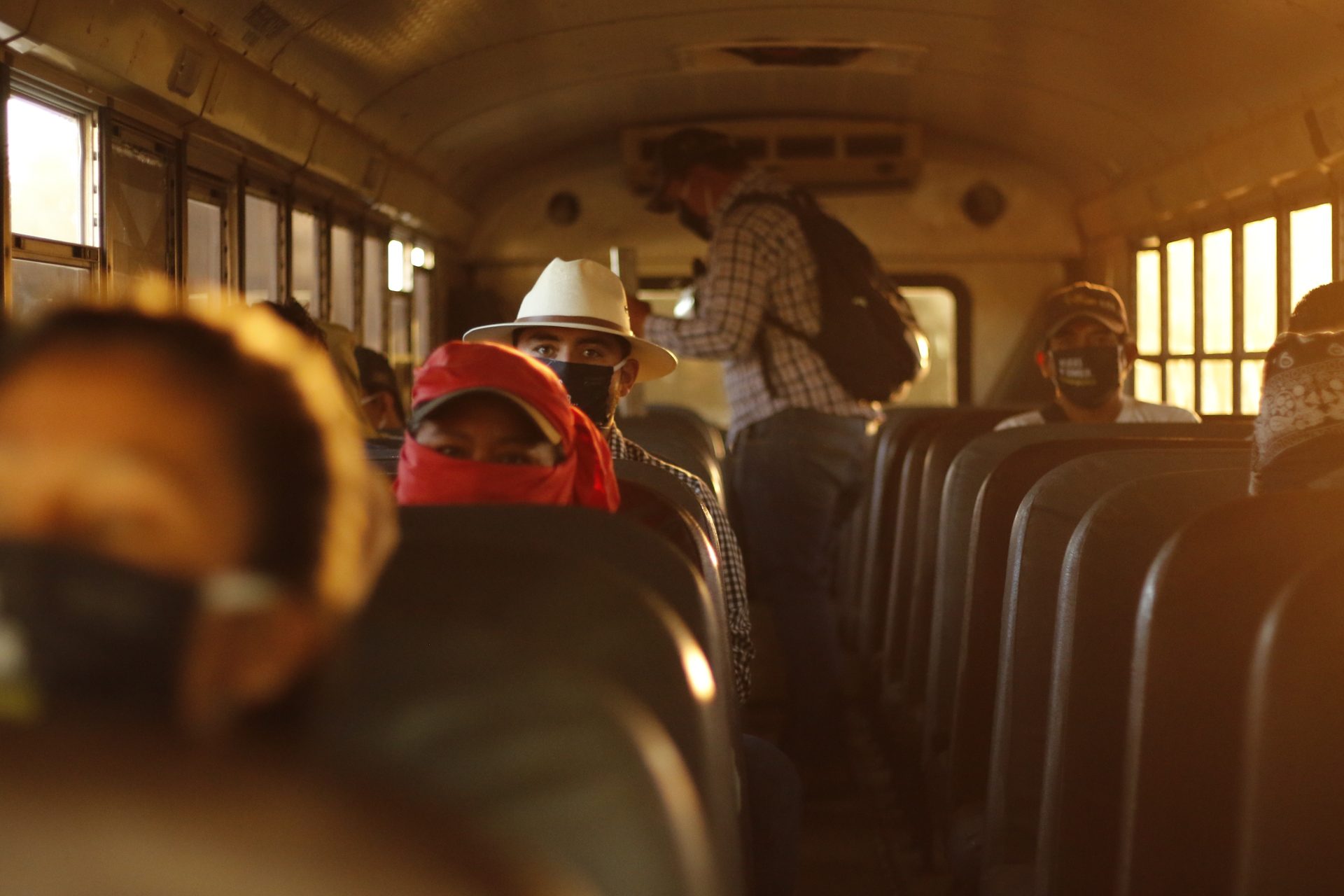
Most of those businessmen come from well-off, “good”, families of the state, with residences in exclusive residential zones of Culiacán. They own fortunes amassed by family dynasties that took full advantage of the area’s agricultural valleys beginning in the late 19th century to set off an agricultural boom propelled largely by Greek, Chinese and Japanese families that settled there and began to exploit the land. Those families grew and, over time, founded new businesses in other economic sectors where they reproduced a uniform “business model” for their workers, one based on low wages and long, exhausting workdays. Conditions that characterized fields in those early days can now be seen in the hearts of cities, in the many call-centers, and on the streets with the apogee of platforms for private transport (especially Uber) and food delivery services. In this milieu, the confinement measures imposed in response to the Covid-19 pandemic have fed an unprecedented boom that is attracting ever more vulnerable populations.
Young migrants from the Sierra face a cruel paradox: approaching the city or poles of agribusiness ensures access to multiple job opportunities, but rarely permits improvements in their quality of life.
The same business models and “ranges of work opportunities” –to use the lingo of government officials– are replicated in illicit economies, such that criminal groups in Sinaloa depend not only on drug production in the Sierra or the cities, but also on means of transportation to move their merchandise, on methods for “laundering” their assets, and on retail drug sales. All these activities require young, cheap laborers willing to work interminable shifts, offering in return the opportunity for them to “be their own boss”, a kind of emancipation from their parents and the modalities of life and family in the Sierra.
We must not, however, lose sight of the fact that fluctuations in markets both licit and illicit are not reflected only in flows of workers expelled from the sierras who gravitate down towards the cities. In fact, the final months of 2020 brought a recovery in the selling price of opium gum. Though unable to identify clear evidence that might help explain the price hike, amapoleros and gum gatherers observed an evident improvement transmitted by the coyotes who announce purchasing prices at the local level. None of the peasants knew why the price had increased.
At the same time, other interlocutors in Sinaloa spoke of a second significant change, this one involving the processing of illegal substances for U.S. markets. Traffickers in Mexico, it seems, had begun to combine heroin with fentanyl, an activity traditionally conducted during the distribution and selling stages across the border. The mix was an even more profitable –and addictive– product. This development, combine with various other factors both local and international in nature, may have contributed to upping the price and raising incomes in poppy-growing zones in recent months.
What we observed is that the contemporary panorama has allowed many serranos to return to their fields. Cultivation is not as profitable as it was back in 2010 when prices could exceed $30,000 pesos per kilo of gum ($ 1,500 USD), but current offers of $16,000-$18,000 pesos ($800 / $900 USD), depending on the zone and the coyote, are substantially higher than those reported for 2019-2020, which fell to just $6,000-8,000 pesos per kilo ($300 / $400 USD).
One of the young men who accompanied us as an interlocutor throughout this project was one of those who went back to planting and harvesting poppies in late 2020, expecting to obtain greater remuneration than he received while working in the city in recent years. The day that the price of gum falls again he will surely leave his parcelas and rejoin the ranks of some organized crime group, seek work in Sinaloa’s agroindustries, or be hired by one of the multinational companies that specialize in transporting people.
Conclusion
This article shows that poppy production in the Golden Triangle must be analyzed increasingly from the perspective of the relations among sierra regions, cities, and agricultural valleys. Historically, poppy production was performed mainly by peasants. Thanks to the high prices for opium gum that were maintained for decades, many populations in these sierras were able to survive in their communities of origin. The most recent period, however, with severe market convulsions and exceptional conditions due to the measures implemented to combat the Covid-19 pandemic, have contributed to rupturing some of the certainty that existed in yesteryear.
Today, young people from the Sierra find themselves in a pendular movement: today earning profits by selling opium gum, tomorrow accepting precarious work in cities. Doubtless, as long as demand for the heroin and fentanyl produced in Mexico exists in the U.S., proletarians in the Sierra will continue nourishing the drug-trafficking industry and its associated legal activities, as described herein. They will plant poppies and cut them to extract the gum –whether they like it or not– to support themselves and their families in mountainous areas of the Golden Triangle.
They will go on tending their fields, inspired by corridos played on portable speakers; those songs that exalt intrepid men, men of arms, cartridges, bulletproof vests, bribes, large caliber firearms, murders, and unattainable wealth, the same songs that paint a picture of the Sierra as the historic birthplace of criminals. They will become emotional and dream of accompanying those great leaders. They will sing and repeat corridos during their long workdays as they plant, irrigate, cut, and store the gum of this mythical flower called the poppy.

